Exploring Geometry with Peranakan Tiles
Floored by the beauty of Peranakan tiles? We uncover a mosaic of mathematics by examining these decorative works. Learn more about the geometry that makes these heritage patterns so on point. Includes a colouring sheet for the young at heart!
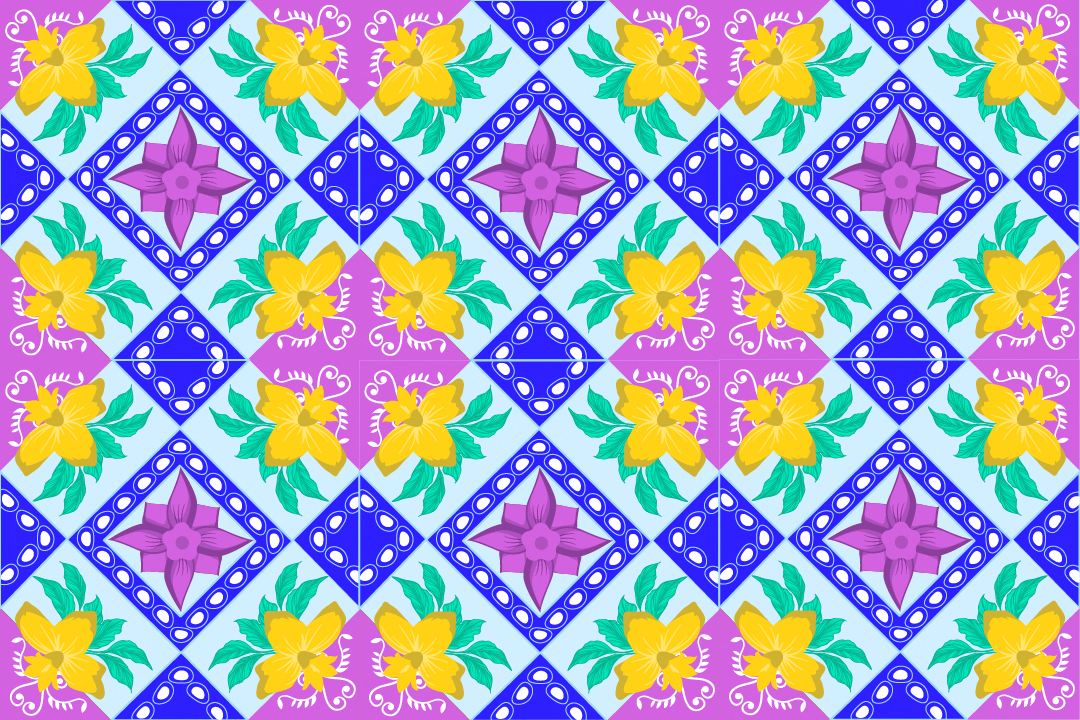
Image Credit: Jansen Michelle
Singapore's Peranakan tiles are well known for their bold, eclectic designs. With their aesthetics standing the test of time, you can find some of these original ornamental tiles in shophouse facades along Katong, Joo Chiat, and Emerald Hill. But have you ever wondered about the elegant mathematical principles that create these eye-catching mosaics?
First, some quick history. What we call "Peranakan tiles" are actually tiles imported from European countries like England, Belgium, Germany, and the Netherlands prior to World War I to decorate the homes of the Chinese and Peranakan community in Southeast Asia (source). Art Nouveau and Art Deco majolica tiles (glazen earthenware) were especially popular with their intricate floral and faunal motifs.
Later in the 1920s, Japan started exporting majolica tiles with designs rich in Chinese symbolism, such as lotuses, peaches, plum blossoms, and dragons, to satisfy growing demand in Singapore and across Malaya (read more here). These majolica tiles from different countries eventually became so synonymous with local communities that they became known in Southeast Asia as Peranakan tiles.
In a 2019 Straits Times feature, artist Jennifer Lim explained, “the tiles tell a story of Singapore's complex cultural DNA and are a reminder of the nation's ability to absorb and reinterpret outside trends and influences."

Peranakan tiles adorning shophouses on Koon Seng Road. Photo credit: Amos Lee/Unsplash
What about the science behind these mosaics of diverse cultures?
Creating durable ceramics is a complicated process involving chemistry, material sciences, and technology. A clay mixture is carefully prepared and poured into a mould, dried, fired in kilns, and then painstakingly glazed to achieve a shiny, glossy finish.
The intensely bright colours of original tiles came at a cost, though. In an interview with Expat Living, Victor Lim from the Peranakan Tile Gallery explains that "production of these [original] tiles ended around 1935 and many of the materials used in the process of creating and preserving the colour – like cobalt, copper or manganese – were discontinued or are no longer in use due to their toxic qualities."
Besides knowledge of minerals and materials, manufacturing of these tiles involved designs with geometrical concepts.
Writing for Garland Magazine, Ananya Mallick notes that "geometric motifs dominate many Peranakan tiles, with recurring patterns of dovetailing shapes and symmetrical formations." Mallick writes, "These motifs not only create a visually striking effect but also symbolise balance and harmony—the foundational values in Peranakan culture."
For example, Mallick states that "geometric lattice" designs are said to protect households, while "basket weave" designs represent the unity of the community.
Some individual Peranakan tiles feature qualities such as rotational symmetry (when the tile still looks the same after some rotation of less than a full turn) and reflectional symmetry (when one half of the tile is a mirror image of the other half).
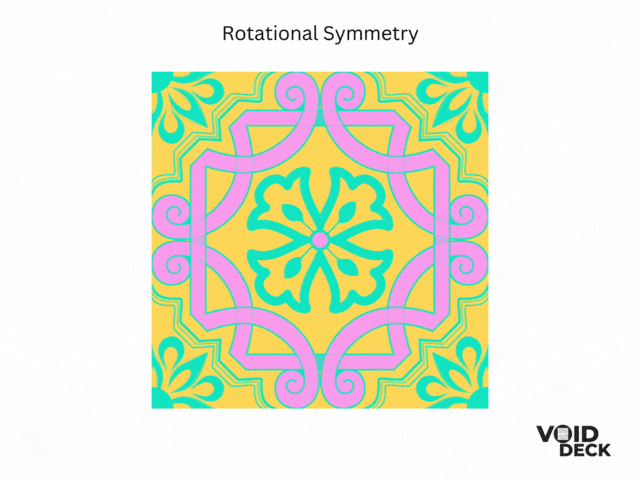
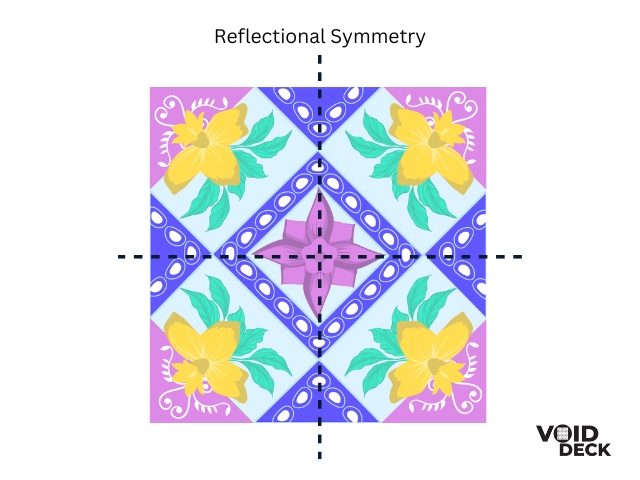
In certain tiles, you can even spot fractals. Fractals are complex, never-ending patterns that, when zoomed in or out of, create a replica of the whole. You can watch this zoom sequence of a shape called a Mandelbrot Set from Mathigon to see how the pattern repeats forever, creating cohesion out of chaos.
To find fractals, you just have to look at nature. For example, a fern is a fractal. If you look at the leaflets of a fern closely, the fern’s leaflets resemble the shape of the entire frond. Since Peranakan tiles often incorporate organic designs featuring detailed plants or flowers, they may exhibit fractal principles.

Other Peranakan tile designs, such as the geometric lattice and basket
weave motifs mentioned by Mallick, show knot theory at work. In mathematics,
knot theoryrefers to the study of mathematical knots. These knots
are different from, for example, tying shoelaces, in that their ends must
be joined so they cannot be undone. The interlacing circles and intricate
lattices of some tiles, perhaps inspired by Chinese knotting or the eternal
knot, resemble some mathematical knots.

Mathematical knot table credit: Matemateca (IME/USP)/Rodrigo Tetsuo Argenton.
Furthermore, the overall arrangement of Peranakan tiles on the floor, wall, or bannister creates a form of tessellation. Tessellations or tilings in mathematics are patterns of repeating shapes that fit perfectly on a surface (typically a plane) with no overlaps or gaps.
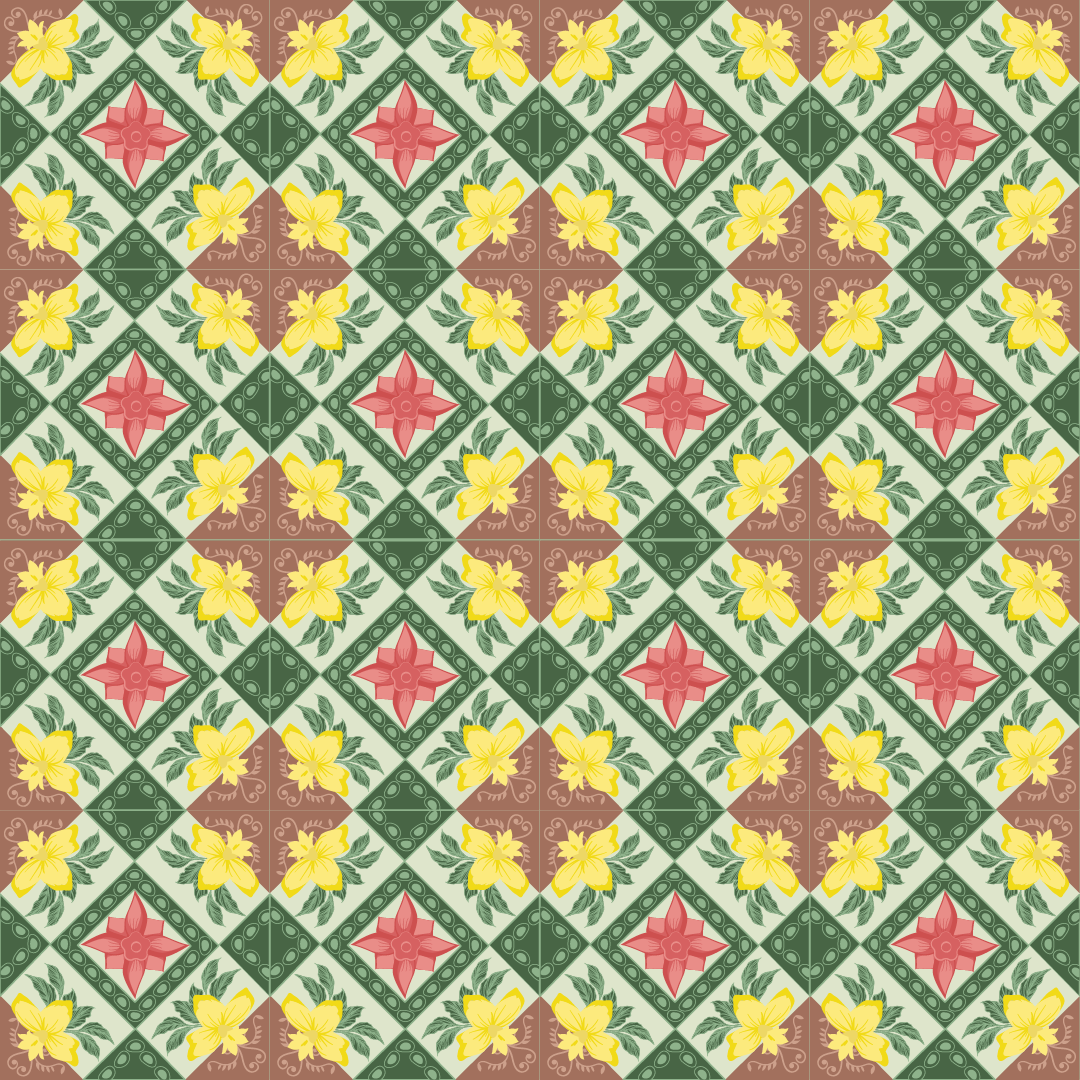
Image credit: Jansen Michelle
While Peranakan tiles are decorative works rather than textbook examples of these geometric concepts, these tiles can be a fun gateway to understanding mathematical principles.
Beautiful patterns such as those featured in Peranakan tiles bridge art and science. Beyond appreciating their aesthetics, studying these patterns can have larger applications in other fields.
For example, fractal geometry helps us send images over the internet. Knot theory has been used by scientists to unravel the structure of DNA. And in manufacturing, tessellations can help factories create products from sheet metal with less waste.
So the next time you spot Peranakan tiles, take a closer look at the patterns you observe–they might just be a sign to understanding our wider world!
Now You Try!
Check out senior science educator Jacy Mok’s origami Peranakan tile creation using a single 15 x 15 cm paper below!
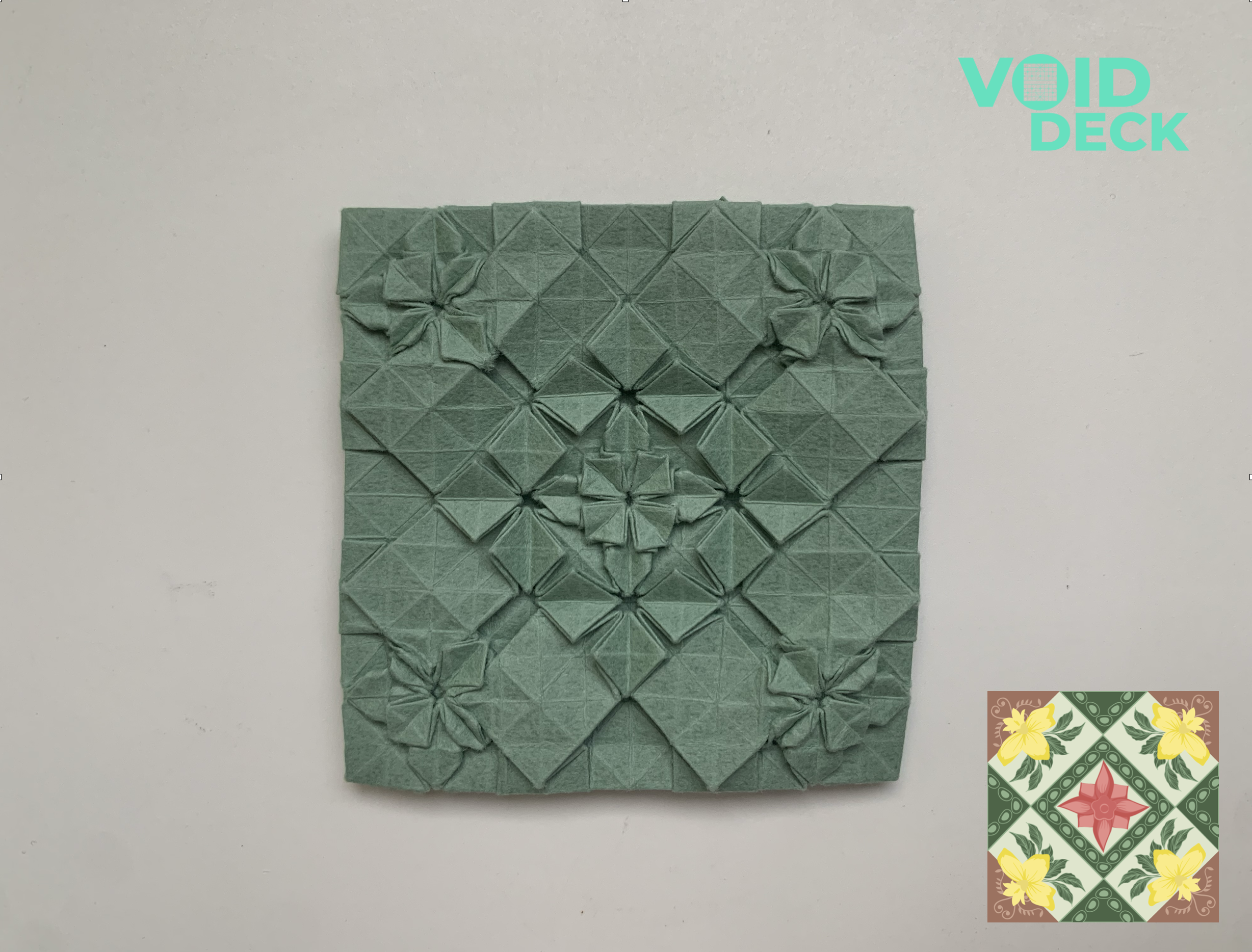
While Jacy's origami is quite complicated, if you’d like to get crafty, you can follow the YouTube tutorial to learn how to fold an origami hydrangea flower that she used for the centre and corners of the Peranakan tile. Origami, like mosaics, relies on a lot of geometry to create wonderful art!
Prefer to let out your inner Picasso instead? Download the colouring sheet below to colour in your very own Peranakan tile masterpiece. Try colouring in the tile to create rotational and reflectional symmetry.
Extra challenge: explore the mathematics of colour theory. You can try this interactive colour wheel by Benjamin Knight to understand colour relationships. Choose complementary colours 180 degrees apart on the colour wheel, or analogous colours within 30-60 degrees of each other. Post your designs and tag @voiddeckmag on Instagram!
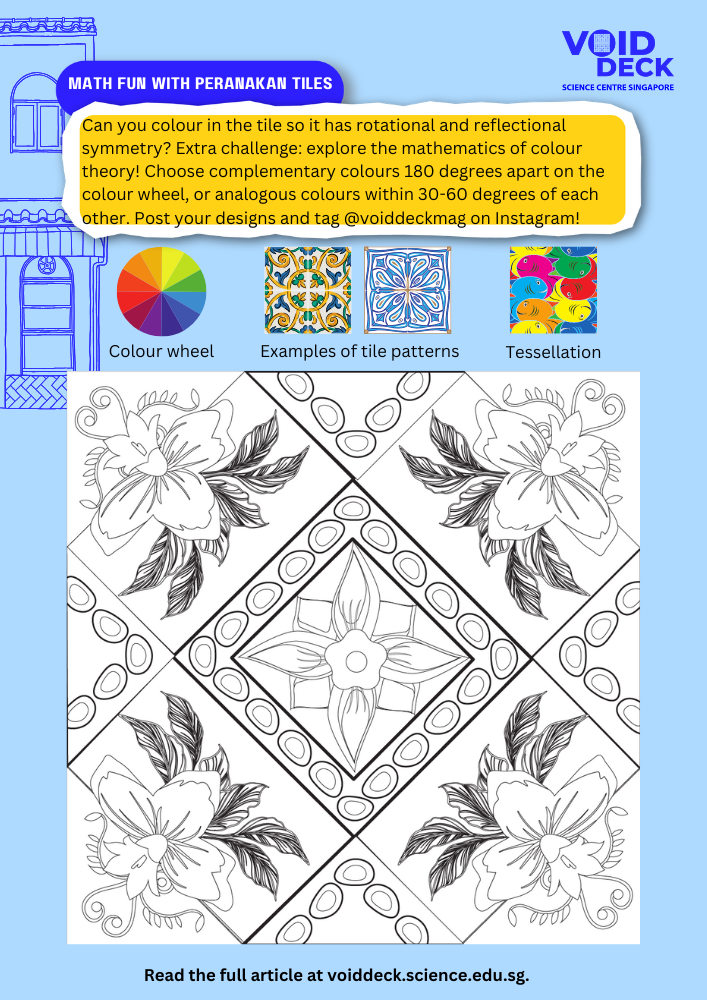
Download the Peranakan tile colouring sheet here!
Unparalleled Fun at Science Centre Singapore
Explore more trippy patterns and geometrical fun at Science Centre Singapore's exhibition The Mind's Eye. Jio your friends for interactive photo ops that play with our visual perception with cool angles and math tricks.
Afterwards, challenge your buddies to navigate Professor Crackitt's Light Fantastic Mirror Maze, a funhouse with infinite reflections.
For parents or educators of young children, you can continue boggling
your little ones' minds through the I Am A Young Mathematician Young Scientist Badge Scheme,
with maths activities you can do at home!
Written by Jamie Uy
Last updated: 31 October 2024

